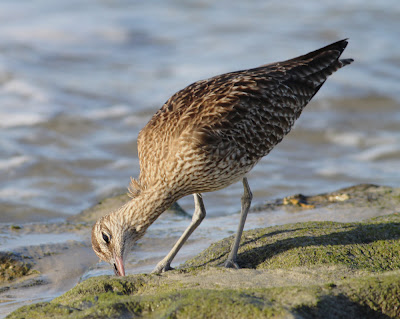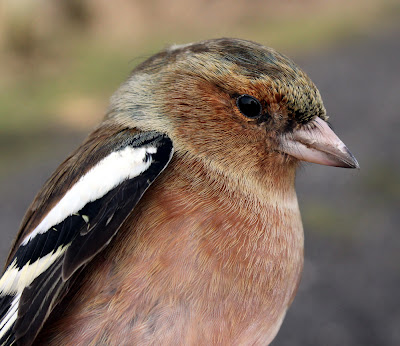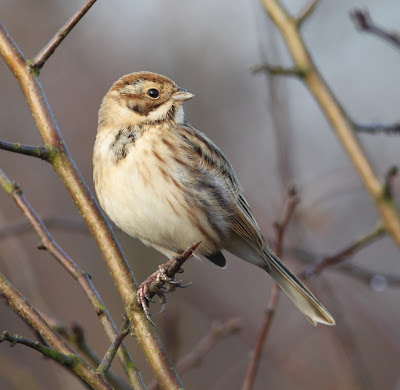Nothing much to report this morning and no new photographs so here's the Whimbrels promised recently.
The Whimbrel Numenius phaeopus is one the most wide-ranging shorebirds in the world, breeding in the Arctic in the eastern and western hemispheres, and migrating to South America, Africa, south Asia, and Australia. It is a smaller version of the curlew family of birds and breeds on moorlands and uplands but uses coastal habitats as it migrates south.
The Whimbrel Numenius phaeopus is one the most wide-ranging shorebirds in the world, breeding in the Arctic in the eastern and western hemispheres, and migrating to South America, Africa, south Asia, and Australia. It is a smaller version of the curlew family of birds and breeds on moorlands and uplands but uses coastal habitats as it migrates south.
A Whimbrel is streaky, greyish-brown with long, blue-grey legs and a down-curved, kinked bill. It can be distinguished from the larger Eurasian Curlew by its shorter bill and strong face pattern with a dark crown, a pale stripe down the middle and dark eye-stripe.
It’s not often I get to see a Whimbrel close up. Here in the UK and probably in much of the Northern hemisphere they are a very wary species which keeps a safe distance from man, probably as a result of being a target for hunters.
When the opportunity recently arose in Fuerteventura to not only watch Whimbrels at close quarters, but also to take a series of photographs, I felt very privileged. No apologies then for over 30 pictures of Whimbrel in today’s post.
The following sequence of pictures was taken on two separate mornings, one of them sunny, the other quite dull. They show how a Whimbrel uses the down-curved bill to probe rocky crevices for food and how the whole bird can with a front view can look quite slim and with a side view can appear very elongated. One of the individuals is shown preening, resting and roosting in between bouts of feeding.
Clicking on the pics will give a close-up slide show of the action in a lightbox.
Whimbrel
Whimbrel
Whimbrel
Whimbrel
Whimbrel
Whimbrel
Whimbrel
Whimbrel
Whimbrel
This Whimbrel would stand more or less motionless, sometimes on one leg for a while before resuming feeding.
Whimbrel
Whimbrel
Whimbrel
Whimbrel
Preening is the how a bird cares for its feathers and involves two different actions, nibbling and stroking. Preening serves the function of returning feathers to their correct position and shape, using the addition of oil to the feathers from the Uropygial gland. Wiping is simply wiping the feathers with the bill, pressing them into place and perhaps spreading some oil over them. The bird uses its bill to nibble along the edges of feathers straightening them out and ensuring the barbules are all zipped up.
Preening keeps birds feathers clean, waterproofed, and in optimum condition for flying. Birds spend a great deal of time preening because having feathers in tiptop condition is important in keeping the bird insulated and weatherproof, a condition which helps an individual's chances of survival.
Birds usually preen after a bath and after feeding. Puffing up the feathers during the preening allows air to the feathers, letting them dry out from the grooming process.
Whimbrel
Whimbrel
Whimbrel
Whimbrel
Whimbrel
Whimbrel
Whimbrel
Whimbrel
Whimbrel
Whimbrel
Whimbrel
Time to air those newly groomed feathers.
Whimbrel
Whimbrel
Whimbrel
Whimbrel
Whimbrel
Time to resume feeding. Whimbrels feed a lot of the time by probing soft mud for small invertebrates and by picking small crabs and similar prey off the surface. Prior to migration, berries become an
important part of their diet.
Whimbrel
More birds soon on Another Bird Blog, but probably not Whimbrels. Log in soon to see what.







































































.jpg)














